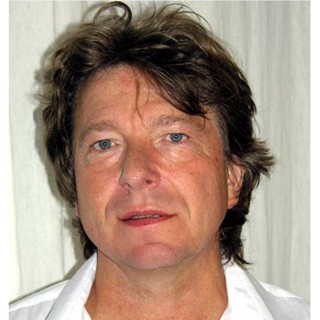Jurgen Gorg

Born in 1951 in Dernbach, West Germany, Jurgen Gorg has established himself as a master craftsman and consummate artist. His etchings and lithographs reflect his innate talent and imagination. He studied visual arts first, in Koblenz, Germany and later, at the Johannes-Gutenberg University in Mainz, Germany. Gorg began his professional career in 1977 as an artist and printmaker and by 1980, was awarded a special painting prize by the district of Rheinland-Pfalz. In 1985, a catalog raisonne was published of Gorg's creations. Gorg's work follows a strong tradition of figurative art with erotic overtones. He interprets his subject matter loosely, keeping his figures open and emphasizing motion through line and contour. A foreword in a book on Gorg's work captures his artistic sensibility: "The predominant subject is the human body: it is the body of a young, slim, beautiful person. The face remains vague, the gestures are those of free motion. Everything concentrates on the body language and the erotic radiation of the figures." His artistic universe consists of lovers, dancers, musicians and masked personages. Tender, lithe, slim, and young, these idealized, incompletely rendered figures suggest the timeless and eternal. An elusive quality is cultivated by Gorg who feels that "something should always remain open." In his work, Gorg explores relationships. A sense of intimacy prevails, yet the viewer is unsure of the precise nature of that intimacy. The perfect bodies suggest a relaxedsensuality. The recurrance of the mask suggest that Gorg is exploring the nature of love and illusion, life as a masquerade or as a continual journey of transformation. Gorg employs a monochromatic palette, applying soft colour with graphite combined with translucent layers of oil paint. He focuses the viewer's eye through his subtle use of white highlights and sparse bright colour. The viewer is caught in the melodic flow of Gorg's delicate and sensual lines and shapes. Space is explored, filled and accentuated with a lyrical fluidity. Born in 1951 in Dernbach, Germany, Jurgen Gorg has established himself as a master craftsman and consummate artist. His etchings and lithographs reflect his innate talent and imagination. He studied visual arts in Koblenz, Germany and later at the Johannes-Gutenberg University in Mainz, Germany. Jurgen Gorg captivates us with the lines of his drawings. The artist combines the mastery of the classical line as found in the Italian Renaissance with a very modern interpretation and use. The viewer is caught in the movement. The melodic flow reminds us of jazz and the improvisational quality of the departure from and return to a simple melody. Space is explored, filled and accented - all executed with a lyrical, subtle, and delicate fluidity. As his mind flows, his hand flows. The human body is the predominant image portrayed by Gorg. His artistic universe consists of lovers, dancers, musicians, and masked personages. Tender, lithe, slim and young, these idealized, loosely rendered figures suggest the timeless and eternal. An elusive quality is cultivated by Gorg who feels that "something should always remain open." The focus centers on body language and kinetic movement. By leaving the faces vague, with eyes almost always closed, there is room for dreaming - both in the viewer and within the subjects of the painting. This quality of the somewhat indefinite yet perfect form creates a romantic aura.
